This article explores the significance of field testing in soil engineering and highlights some common methods employed in measuring the bearing capacity of soils.
- This article explores the significance of field testing in soil engineering and highlights some common methods employed in measuring the bearing capacity of soils.
- Standard Penetration Test (SPT)
- Dynamic Cone Penetration Test (DCPT)
- Plate Load Test
- Vane Shear Test
- Pressure-Meter Test
- Conclusion
- Sources & Citations
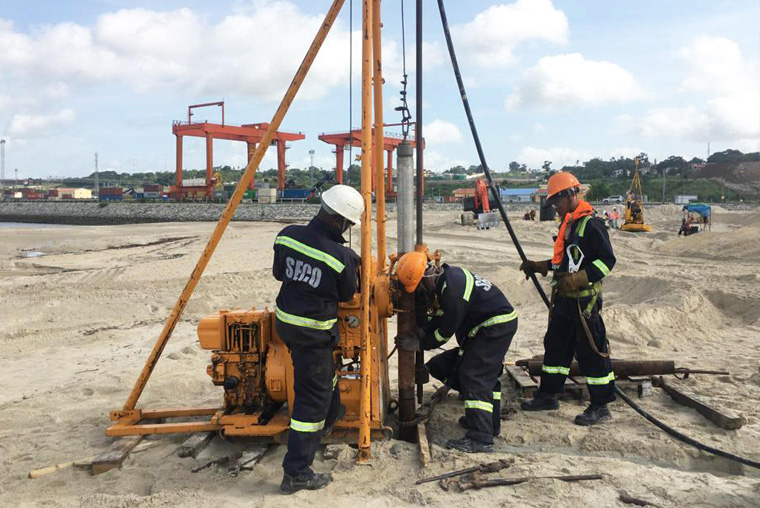
The soil on which a structure is built plays a significant role in ensuring the overall stability and safety of a project. The implication is that a comprehensive soil assessment must always be conducted during the inception stage of every project. One key aspect of this soil assessment is the determination of the soil bearing capacity, which is the ability of the soil to support loads from structures or foundations.
In assessing the bearing capacity of a soil, laboratory or field-testing methods can be adopted. Either of these two methods have their pros and cons. However, with respect to laboratory testing, no matter how carefully soil samples are taken, stored, transported to a laboratory and tested, some disturbance is bound to happen. Thus, many engineers prefer the alternative of testing the soil in situ. As with sampling techniques there have been advances in sophistication and variety of field-testing techniques and the most common types are briefly described article.
Standard Penetration Test (SPT)
The Standard Penetration Test (SPT) is one of the most widely used methods for evaluating the relative density of soil which is an indirect indication of a soil’s bearing capacity. It is based on the principle that the denser a soil, the harder it is to hammer into it.
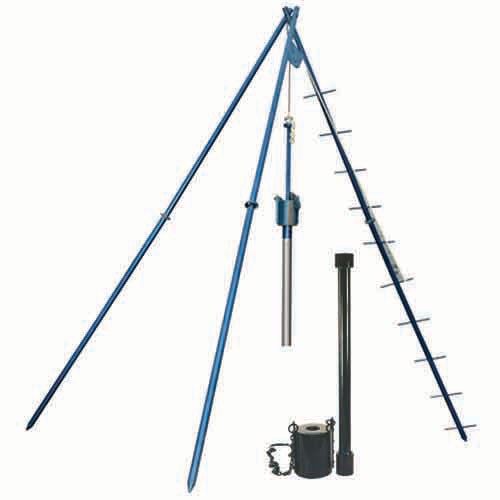
In this test, a hollow drill is advanced into the ground, and the number of blows required for the penetration of the sampler is recorded at regular intervals (Figure 1). The N-value, representing the number of blows per foot of penetration, is then used to estimate the soil’s bearing capacity. SPT is particularly useful in granular soils, providing valuable data for foundation design.
Dynamic Cone Penetration Test (DCPT)
The dynamic cone penetration test (DCPT) operates on same principle as the standard penetration test (SPT). However, in DCPT, a metal cone is repeatedly driven into the ground by a series of dynamic blows delivered by a standard hammer (Figure 2). The penetration depth of the cone after each blow is recorded, providing a dynamic profile of soil resistance with depth. The results so obtained is then used to estimate the bearing capacity of the soil.
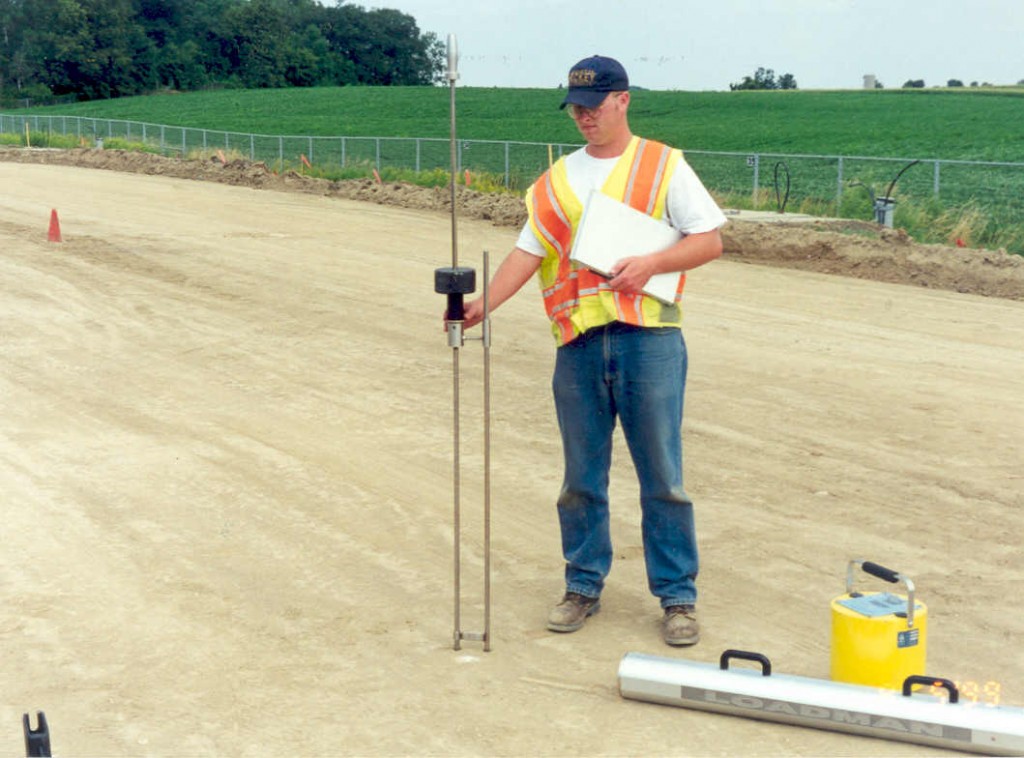
The dynamic cone penetration test DCPT, is particularly suitable for granular soils, where traditional methods may be challenging to apply.
Plate Load Test
The Plate Load Test is an in-situ test that directly measures the bearing capacity of the soil beneath a loaded plate. A rigid plate of known dimensions is placed on the ground, and a load is applied incrementally (Figure 3). The settlement of the plate is then measured, and the bearing capacity is calculated based on the applied load that causes the soil to shear.
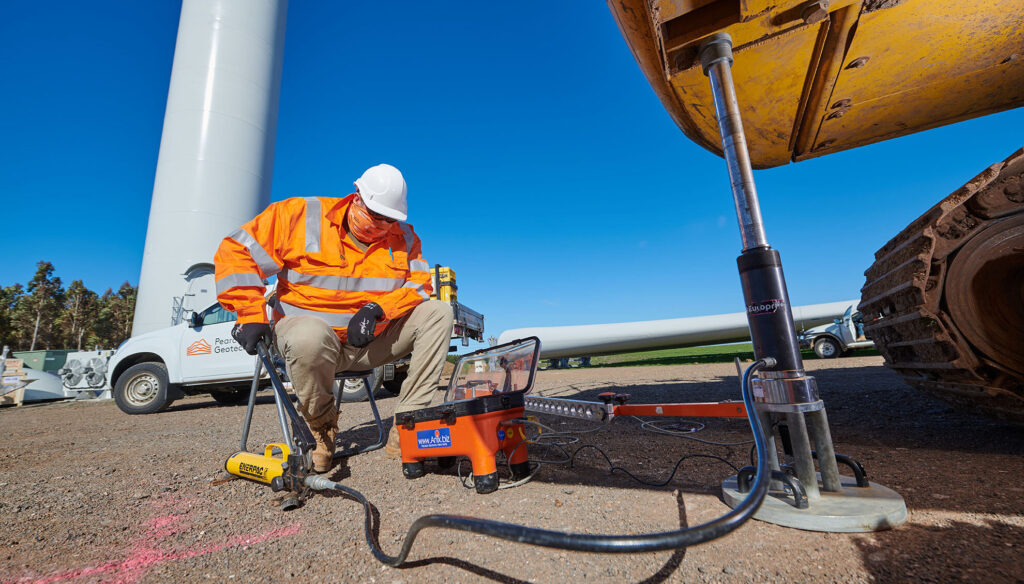
This test is particularly useful for assessing the bearing capacity of very shallow foundations.
Vane Shear Test
The Vane test is particularly suitable for cohesive soils. It is based on the principle that if a garden spade is driven into clay and then rotated, it will effectively shear the clay. The higher the shear resistance of the clay, the higher the amount of torque that will be required to rotate the spade. The Vane is a cruciform of four blades fixed to the end of a boring tube’s rod (Figure). During the test, the vane is inserted into the ground at a specified depth, and the torque required to cause shear failure is measured. The results from this test help in assessing the soil’s bearing capacity, especially in clayey soils where cohesion plays a significant role.
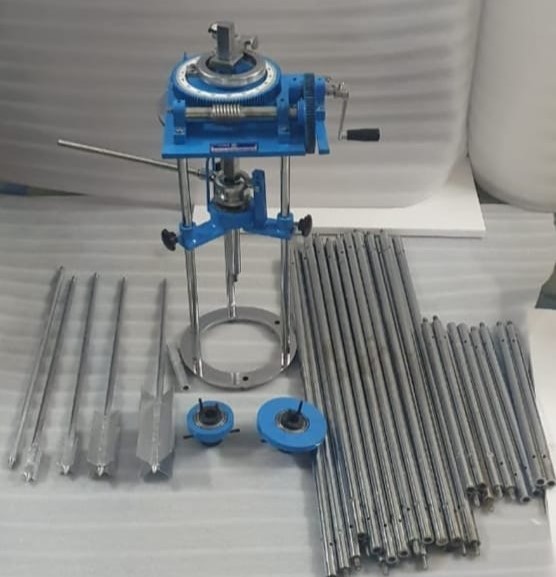
The primary advantage of the plate bearing test is its ability to provide direct and practical information on the in-situ load-bearing capacity of the soil beneath a foundation. By applying loads that simulate the expected stresses from a structure, the plate bearing test allows engineers to assess the performance of the soil under actual working conditions. Additionally, the plate bearing test is versatile and can be adapted to various site conditions, making it a valuable tool in geotechnical engineering for assessing the stability and reliability of shallow foundations across different types of soils and projects.
Pressure-Meter Test
The Pressure-meter Test is a sophisticated geotechnical field test designed to measure the deformation characteristics of soils and rock formations, providing critical information for estimating bearing capacity and designing foundations. In this test, a cylindrical probe is inserted into a borehole, and pressure is applied to the probe’s membrane, causing it to expand radially against the soil. The resulting pressure and volume changes are continuously measured, allowing engineers to assess the in-situ soil’s modulus of deformation and shear strength. The Pressure-meter Test is particularly advantageous in evaluating the load-bearing capacity of deep foundations, such as piles or caissons, where accurate information about the soil’s response to stress is crucial.
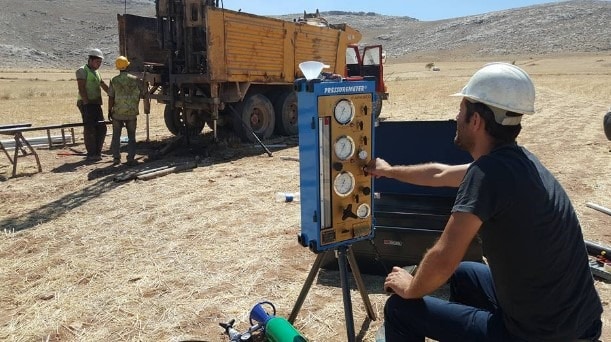
One key feature of the Pressure-meter Test is its ability to provide detailed data on both elastic and plastic deformations of the soil. Engineers can use the results to create pressure-volume curves that depict the stress-strain behavior of the soil under various loads. This information aids in designing foundations with a thorough understanding of the soil’s response to different stress levels.
See: Site Investigations in Foundation Design
Conclusion
In conclusion, the choice of field method for measuring bearing capacity depends on factors such as soil type, project scale, and specific engineering requirements. The methods documented in this article are standardized methods. There have been a number of developments, refinements and adjustments to the above tests as well as geophysical tests, aerial infra-red photography, video photography in boreholes, etc. These newer tests can sometimes be less expensive, less time-consuming and yield more information than the traditional tests. For more information, refer to specialist soil mechanics literature for details.
Sources & Citations
- Tomlinson, M. J (2001) Foundation Design and Construction 7th ed. New Jersey: Prentice-Hall
Institution of Civil Engineers (2011) UK Specification for Ground Investigation 2nd ed. London: Thomas Telford - Curtin W.G., Shaw G., Parkinson G.I., Golding J.M, and Seward N.J (2006) Structural Foundation Designer’s Manual. 2nd ed. Blackwell Publishing.
